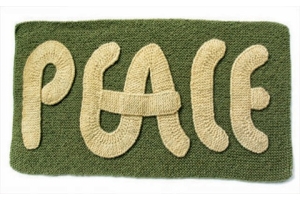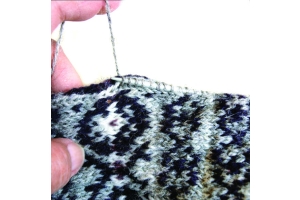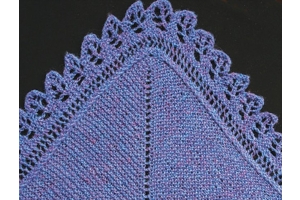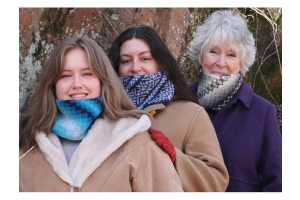Blog #27 Meg Swansen on Blending Dye-Lots
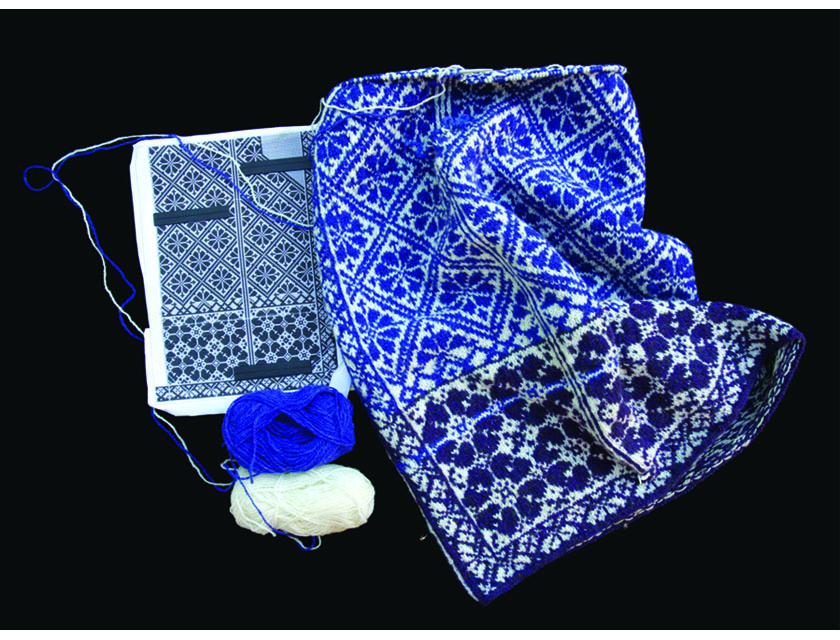
Dealing with Dye-Lots
Knitters dread the occurance of a sudden dye-lot change in the middle of a plain sweater. Sometimes the change is so subtle that it is not apparent when looking at the skein or ball, but shows up only when knitted. If the tags are missing, you can check by taking 3 or 4 strands of each mystery-skein, and twisting them around each other. Look at the twist in bright natural light, and you may be able to determine a difference if one exists.
Of course, the obvious solution is to make sure you have more than enough wool of an identical dye-lot. However, this is real life, and it has happened to nearly all of us; usually taking the form of running out of wool and having to try to make-do with a skein of a slightly different lot.
One possible solution is to work alternate rounds (or rows) of old and new dyelots for an inch or so and, if the change is not too great, the new lot can be subtly snuck in, un-noticed. If you know you need to mix in a new dye-lot, start this transition when you near the end of your first color. Sometimes, though, you only become aware of it when you see a stripe in your fabric - in which case, it is worth the trouble to rip back and blend the two shades.
Depending on amounts you have of each of the two shades, you might relagate the different lot to the sleeves; or to the ribbing at the lower edges of body and sleeves; or to the border of a cardigan, etc. That way any shade difference will be disguised by the change in texture or location.
This following solution was shown (and proven) to us at Knitting Camp and, although the two dye-lots were quite noticeably different, no one in the room could tell where the change had taken place. Once the knitter realized she had two decidedly different shades, she introduced occasional rounds of purl as a texture pattern in her otherwise plain stocking stitch sweater. After purling a single round of the old dye-lot, she switched to the new lot on the following rounds, and the result was a complete camouflage. Naturally, she matched the purl-rounds design on the sleeves, even though un-needed, and the solution became a design feature.
But be careful ... in color pattern, even wth all matching wool, you can fool yourself into believing you have different lots: a faux appearance of a dye-lot change. Please heed the over/under ‘rule’ among color-pattern knitters; once you assign dark and light wool to specific hands (or fingers), do not shift. If you switch dark and light wools in the middle of a small-motif repeat, the change in color dominance can convince you that there has been a markedly different color change even when none exists.
See this example from Felipe Cavalheiro - his 2 hats were knitted with the very same wool (same dye-lot), and by purposely changing which color was dominant, the hats look as if they were worked with different wools.

Drastic shifts in color can sometimes be used to advantage. When the two shades are simply too extreme to fudge, you can seek out other related colors and turn the whole project into a mélange of nuanced hues. For example, decades ago, I had a considerable amount of leftover beige handspun - but not enough for an entire project. I spun up (in equal diameter) other natural-colored fleece that I had on hand, and knitted this Adult Surprise Jacket.
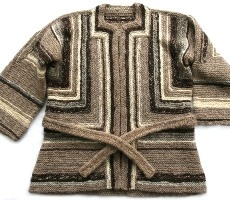
Of course no dye was involved but there were plenty of Sheep-Shade differences. This ASJ is slightly waist-shaped, bell-sleeved, and has EZ’s clever I-Cord Belt, worked as follows:
Cast on 9. **Knit 6, wool fwd, slip 3 p’wide. Turn. Repeat from ** ad infinitum.
When knitting a small-gauge, many-colored garment with an all-over motif, slight shifts in dye-lots are imperceptable. For instance, the Shetland Fair Isle garments shown in the video: when the color repeats are separated - vertically - it would be nearly imposible to spot different dye lots.
Speaking of Shetland, this beautiful wool is not relagated only to Fair Isle garments. Stockings, Norwegian sweaters, shawls, baby and doll clothes, Turkish patterns - these are just a few of the many styles that can be worked in this versatile wool. With nearly 240 shades from which to choose, you are sure to find just the right color combinations.
Good knitting,
Meg

